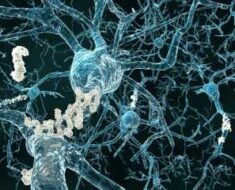A combination of interval training and eating only within fixed times of the day could be the key to getting rid of dangerous belly fat.
It's that time of year again.
We emerge from the Christmas holidays a few kilos heavier. What now?
Recipes for weight loss abound.
One talking point on the weight loss front is time-restricted eating, which means that you limit your daily calorie intake window.
For example, you might only eat for ten out of the 24 hours in a day, and not eat between 18:00 in the evening and 08:00 the next day.
But does the strategy work?
"Yes," says Trine Moholdt, who heads the Exercise, Cardiometabolic Health and Reproduction Research Group (EXCAR) at the Norwegian University of Science and Technology (NTNU)
Eat anything you want
Moholdt's group has recently published a large study in which the research team looked at the effects of time-restricted eating and high-intensity interval training (HIIT) in overweight and obese women.
The participants were allowed to eat whatever they wanted and as much as they wanted, but all their calorie intake had to take place within a ten-hour maximum time window.
Numerous studies have shown positive health effects of time-limited eating and HIIT individually. We wanted to see if combining these two lifestyle changes is more effective than just one of them alone. Few previous studies have done that."
Trine Moholdt,Head of Exercise, Cardiometabolic Health and Reproduction Research Group (EXCAR) at NTNU
The study included 131 women and lasted for seven weeks. The women were divided into three groups:
High-intensity interval training: Participants trained for 35 minutes three times each week. They completed two sessions of 4 x 4-minute interval training and one session of 10 x 1-minute segments. The participants trained at over 90 per cent of their maximum heart rate during the high-intensity interval run segments.
Cancer Research eBook

Combination group: Participants combined high-intensity interval training and time-restricted eating.
Control group: This group ate and exercised as they normally did.
The combination group ended up with the best results.
Lost more belly fat than other groups
"We found significantly reduced long-term blood sugar in the combination group participants. Their decrease in weight, fat mass and visceral fat was also almost twice as great as in the other two intervention groups. They also improved their oxygen uptake," says Moholdt.
Visceral fat is the fatty tissue that surrounds the internal organs in the abdominal cavity.
This fat is considered the most dangerous because the fat cells around the stomach can create proteins that trigger inflammation in the body. This can in turn increase the risk of obesity, diabetes, cardiovascular disease, cancer, depression and dementia.
Even if you can't target the specific parts of the body where you want to lose weight, such as with sit-ups, studies have shown that abdominal fat in particular can be reduced more by exercise than fat in other parts of the body can. The NTNU study confirms this.
Exercise + dieting = best outcome
"The risk of losing weight without exercising is that you'll lose a lot of muscle mass, which isn't advisable. Starting with both time-limited eating and high-intensity interval training can be a good idea if you want to quickly improve your health and reduce the risk of disease," says Moholdt.
All the participants who joined an exercise group were followed up by the researchers. They had to attend the training laboratories at NTNU and received guidance from the research team that led the training.
"A lot of the participants said that it really helped to have someone who held them accountable and that they had to report to. Now we're starting a study where they'll train on their own with only weekly digital follow-up," says Moholdt.
The Norwegian University of Science and Technology (NTNU)
Haganes, K.L., et al. (2022) Time-restricted eating and exercise training improve HbA1c and body composition in women with overweight/obesity: A randomized controlled trial. Cell Metabolism. doi.org/10.1016/j.cmet.2022.09.003.
Posted in: Medical Science News | Medical Research News | Healthcare News
Tags: Blood, Blood Sugar, Cancer, Cardiometabolic, Cardiovascular Disease, Cell, Cell Metabolism, Dementia, Depression, Diabetes, Dieting, Exercise, HbA1c, Heart, Heart Rate, Inflammation, Metabolism, Muscle, Obesity, Oxygen, Reproduction, Research, Stomach, Technology, Weight Loss
Source: Read Full Article





